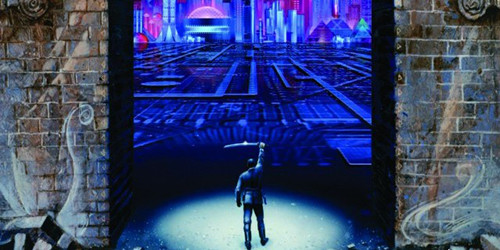Excerpt from the novel Snow Crash ![]()
![]() by Neal Stephenson
by Neal Stephenson ![]()
![]()
That Juanita is talking this way does not make it any easier for Hiro to get back on his feet in this conversation. “How can you say that? You’re a religious person yourself.”
“Don’t lump all religion together.”
“Sorry.”
“All people have religions. It’s like we have religion receptors built into our brain cells, or something, and we’ll latch onto anything that’ll fill that niche for us. Now, religion used to be essentially viral—a piece of information that replicated inside the human mind, jumping from one person to the next. That’s the way it used to be, and unfortunately, that’s the way it’s headed right now. But there have been several efforts to deliver us from the hands of primitive, irrational religion. The first was made by someone named Enki about four thousand years ago. The second was made by Hebrew scholars in the eighth century B.C., driven out of their homeland by the invasion of Sargon II, but eventually it just devolved into empty legalism. Another attempt was made by Jesus—that one was hijacked by viral influences within fifty days of his death. The virus was suppressed by the Catholic Church, but we’re in the middle of a big epidemic that started in Kansas in 1900 and has been gathering momentum ever since.”
“Do you believe in God or not?” Hiro says. First things first.
“Definitely.”
“Do you believe in Jesus?”
“Yes. But not in the physical, bodily resurrection of Jesus.”
“How can you be a Christian without believing in that?”
“I would say,” Juanita says, “how can you be a Christian with it? Anyone who takes the trouble to study the gospels can see that the bodily resurrection is a myth that was tacked onto the real story several years after the real histories were written. It’s so National Enquirer-esque, don’t you think?”


